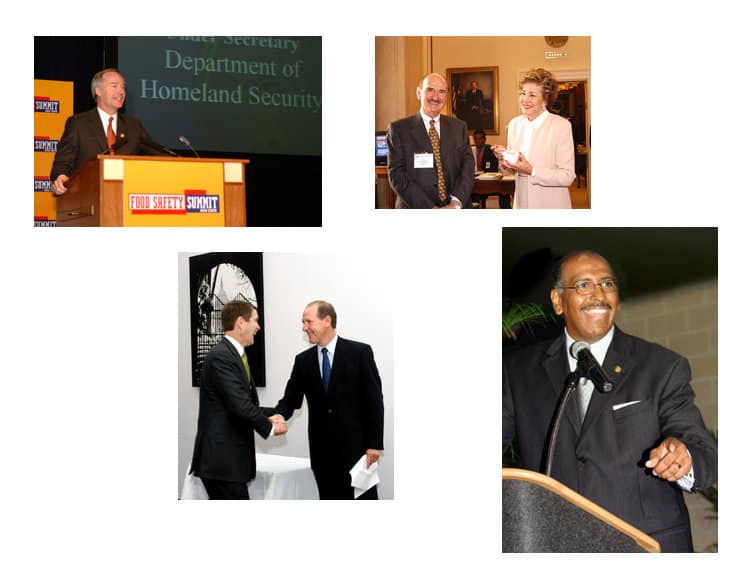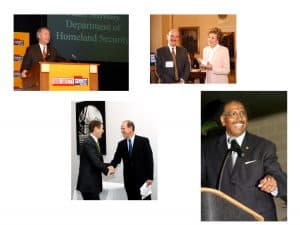
When you’re sitting next to a president
Chapter 1: From film to the internet
The year was 2005, and Flckr was an infant. The internet was clunky, and America Online popular. MySpace hadn’t taken the world by storm. Facebook had just started, but nobody knew about it.
Wire services ruled the news media, along with a handful of broadcast networks. Fox News was growing into a conservative power house. Greta Van Susteren was one of their prime time shows.
George W. Bush occupied the White House.
Hillary Clinton was a junior US Senator.
I was four years into my career as a professional photographer. I’d started the web site DCeventPhotos, which was marketed completely online. At that time, our emphasis was catering to the the lobbyist groups — covering breaking news on Capitol Hill for trade associations, unions, and other Washington organizations that needed photos of what was happening at Congress. Even then, we also photographed dozens of conventions and conferences . We captured photos the wire services didn’t provide because the news was niche. Also, photos the clients wanted for private, controlled use — and didn’t want the press to have. Or see. Or even know about. Professional life in Washington is different.
Our sweet spot was taking those photos and making them available for release quickly. In fact, quicker than the Associated Press, faster than any other photographer. Digital photography had just exploded as the norm for news images. I figured if we were now eliminating the dark room, then why the lag from taking the photo to getting imaging to an editor? I wanted to develop a system where I clicked the photo, and it was available within moments, on a web site, for download. I called it “Click! Upload!” Now it sounds banal. Then it was ground breaking.
Other photographers thought I was crazy, and they weren’t shy in letting me know.
Mom and I had started shooting on film long before digital technology took over the world. I grew up in her darkroom. In college, I worked for the Baltimore Gay Paper — a local community publication covering the LGTBQ community — and handled all the photography for that publication. By the way, the term “LGTBQ” didn’t exist. “Gay” pretty much covered everything. If you weren’t gay, you were “bi” or “lesbian” or “straight”. That was it.
At the Gay Paper, I developed every photo in the dark room. I sucked in the darkroom. I always mixed chemicals wrong, opened film and exposed it to light. I rolled the negatives incorrectly onto the little plastic wheel. I hated the smell. Photographers who dream nostalgic for the days of the darkroom must like bathing in cancer causing pathogens.
But now it was 2005, and increasingly easy to connect your computer to the internet. You could use your cell phone as a modem, or connect to one of the brand new hotspots that sprung up around the city in cyber cafes. Or, you could scan for open networks off any block, and find a signal to hop on. You could not use your Mifi card — that was still 4 long years away.
Mom and I spent most of our time around Washington, and at hearings at the Capitol. We were part of the US Senate Gallery of Press Photographers, an elite group among journalists. However, they hated me. They’d stop me in the elevator, as I was rushing to a shoot, and scream at me:
“YOU ARE RUINING PHOTOGRAPHY FOR THE REST OF US!” Shouted. In my face. No where to run in an elevator.

Part of their concern was mom and I charged a flat day rate, and that rate included the use of the photographs however the client wanted. Now that’s common. Then, it was revolutionary. Photographers made half their money on licensing the images: they charged both for the shoot, and then charged for an image license. It was easy for the photographer to control image release, since they held the negatives.
But with digital imaging, there was no negative. You just send the client the high resolution file. Hell, most of the “reproduction” was on web portals, anyway. The days of photos being hard-copy printed in a monthly news letter were dwindling. I knew once the client had that digital file, it would be impossible for me to control. So I didn’t try.
The second thing that drove other photographers crazy was our ability to release digital images with a minimum of post production in Photoshop. Photoshop had taken photographers by STORM. Their was a distinct attitude of shooting hundreds and hundreds of images, and sorting through those photos in post production later. Some photographers relied on Photoshop to adjust the exposure and correct errors — to the point they paid little attention to how they were shooting the original photos. And they all photographed on the camera’s automatic setting — figuring they’d adjust and tweak later, on the computer. I thought that was a strange, time intensive work flow. I hated Photoshop almost as much as the darkroom — the less time I could spend fixing images, the better. I figured if I could shoot correctly from capture, then any work on the computer would be minimal. My goal was to eliminate the need for “Photoshopping” altogether.
It was one day, as I was leaving a boring hearing of a sub-committee of the US Senate, that my brand new cell phone rang. Actually, the phone clucked like a chicken.
The call I answered forever changed my business. In fact, it defined how I’d work for the next fifteen years. It came on the same day my colleague had screamed at me on the elevator that I was ruining the world of professional photography and needed to fall in line. Otherwise, he suggested, perhaps my credentialing with the Senate would be revoked.
A threat.
But that phone call changed everything.
There are three times my life irrevocably changed: 9/11/2001 when my photos of Ground Zero launched my career, the day I met Matthew and felt the world shift under my feet, and the day I stood in the halls of congress answering my clucking-chicken phone.
….To be continued.
